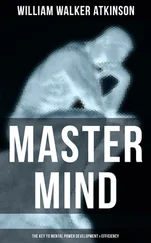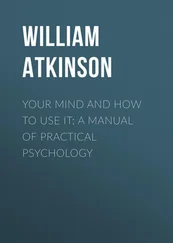William Atkinson - Mind and Body; or, Mental States and Physical Conditions
Здесь есть возможность читать онлайн «William Atkinson - Mind and Body; or, Mental States and Physical Conditions» — ознакомительный отрывок электронной книги совершенно бесплатно, а после прочтения отрывка купить полную версию. В некоторых случаях можно слушать аудио, скачать через торрент в формате fb2 и присутствует краткое содержание. Жанр: foreign_antique, foreign_prose, на английском языке. Описание произведения, (предисловие) а так же отзывы посетителей доступны на портале библиотеки ЛибКат.
- Название:Mind and Body; or, Mental States and Physical Conditions
- Автор:
- Жанр:
- Год:неизвестен
- ISBN:нет данных
- Рейтинг книги:3 / 5. Голосов: 1
-
Избранное:Добавить в избранное
- Отзывы:
-
Ваша оценка:
- 60
- 1
- 2
- 3
- 4
- 5
Mind and Body; or, Mental States and Physical Conditions: краткое содержание, описание и аннотация
Предлагаем к чтению аннотацию, описание, краткое содержание или предисловие (зависит от того, что написал сам автор книги «Mind and Body; or, Mental States and Physical Conditions»). Если вы не нашли необходимую информацию о книге — напишите в комментариях, мы постараемся отыскать её.
Mind and Body; or, Mental States and Physical Conditions — читать онлайн ознакомительный отрывок
Ниже представлен текст книги, разбитый по страницам. Система сохранения места последней прочитанной страницы, позволяет с удобством читать онлайн бесплатно книгу «Mind and Body; or, Mental States and Physical Conditions», без необходимости каждый раз заново искать на чём Вы остановились. Поставьте закладку, и сможете в любой момент перейти на страницу, на которой закончили чтение.
Интервал:
Закладка:
The blood cells are important members of the cell-community, and are exceedingly numerous, there being over 75,000,000,000 of the red-blood cells alone. These red-blood cells move in the blood currents, carrying through the arteries each its little load of oxygen which it transports to the distant tissues that they may be invigorated and vitalized anew; and, returning, carrying through the veins the debris and waste products of the system to the great crematory of the lungs where the waste is burnt and thrown off from the body. Like the ships that sail the sea, each cell carries its outgoing cargo, and returns with another one. Some of these cells perform the office of special repairers, forcing their way through the walls of the blood-vessels and penetrating the tissues in order to perform their special tasks. There are several other kinds of cells in the blood besides the carriers just mentioned. There are the wonderful soldier and police cells which maintain order and fight battles when necessary. The police cells are on the constant lookout for germs, bacteria and other microscopic disturbers of the peace of the body. When these tiny policemen discover vagrant germs, or criminal bacteria, they rush upon the intruder and tying him up in a mesh, proceed to devour him. If the intruder be too large or vigorous, a call for assistance is sent out, and the reserve police rush to the assistance of their brothers and overpower the disturber of the peace. Sometimes when the vagrants are too numerous, the policemen throw them out from the body, by means of pimples, boils and similar eruptions. In case of infectious diseases, an army corps is ordered out in full strength and a royal fight is waged between the invading army and the defenders of home and country.
Some of the blood cells take a part in the process of extracting from the food its nourishing particles, and then carrying the same through the blood-channels to all parts of the body, where it is used to feed and nourish the stationary cells there located. These cells manufacture the chemical juices of the body, such as bile, gastric juice, pancreatic juices, milk, etc., in short the entire physical process is carried on by these indefatigable tiny cells. The body of each of us is simply a great community of cells of various kinds. The cells are born by the form of reproduction common to all cells, that of sub-division. Each cell grows until a certain size is reached, when it assumes a “dumb-bell” shape, with a tiny waist line, which waist is afterward dissolved and the two cells move away from each other. In this way, and this way alone, does the body grow, the material required for the enlargement of the cell being supplied from the food and nourishment partaken by the individual. Cells die after having performed their life-work, and their corpses are carried through the veins by the carrier cells, and cast into the crematory of the lungs where they are consumed.
The body is constantly undergoing a process of change and regeneration. Old cells are being cast off every second, and new cells are taking their places. Our muscles, tissues, hair, nails, nerves, brain substance, and even our bones are constantly being made over and rebuilt. Our bodies to-day do not contain a single particle of the material which composed them a few years back. A few weeks suffices to replace our entire skin, and a few months to replace other parts of the body. If a sufficiently large microscope could be placed over our bodies, we would see each part of it as active as a hive of bees, each cell being in action and motion, and the entire domestic work of the human hive being performed according to law and order. Verily, “we are fearfully and wonderfully made.”
A number of the best authorities have used the illustration of the process of the cells in healing an ordinary wound, in order to show the activity and “mind” of the tiny cells. We have become so accustomed to the natural healing of a wound, scratch or broken skin, that we have grown to regard it as an almost mechanical process. But, science shows us that there is manifested in the healing process a marvellous degree of life and mind in the cells. Let us consider the process of healing an ordinary wound, that we may see the cells at work. Let us imagine that we are gazing at the wounded part through a marvellously strong microscope which enables us to see every cell at work. If such a glass were provided we should witness a scene similar to that now to be described.
In the first place, through our glass, we should see the gaping wound enlarged to gigantic proportions. We should see the torn skin, tissues, lymphatic and blood vessels, glands, muscles and nerves. We would see the blood pouring forth washing away the dirt and foreign substances that have entered the wound. We would then see the messages calling for help flashing over the living telegraph wires of the nerves, each nerve-cell rapidly passing the word to its neighbor until the great sympathetic centres received the call and sounded the alarm and sent out a “hurry up” call to the cells needed for the repair work. In the meantime the cells of the blood, coming in contact with the outside air have begun to coagulate into a sticky substance, which is the beginning of the scab, the purpose being to close the wound and to hold the severed parts together. The repair cells having now arrived at the scene of the accident begin to mend the break. The tissue, nerve, and muscle cells, on each side of the wound begin to multiply rapidly, receiving their nourishment from the blood cells, and quickly a cell bridge is built up until the two severed edges of the wound are reunited. This bridging is no haphazard process, for the presence of directing law and order is apparent. The newly-born cells of the blood-vessels unite with their brothers on the other side, evenly and in an orderly manner, new tubular channels being formed skillfully. The cells of the connective tissues likewise grow toward each other, and unite in the same orderly manner. The nerve-cells repair their broken lines, just as do a gang of linemen repair the interrupted telegraph system. The muscles are united in the same way. But mark you this, there is no mistake in this connecting process – muscle does not connect with nerve, nor blood-vessel with connective tissue. Finally, the inner repairs and connections having been completed, the scab disappears and the cells of the outer skin rebuild the outer covering, and the wound is healed. This process may occupy a few hours, or many days, depending upon the character of the wound, but the process is the same in all cases. The surgeon merely disinfects and cleans the wound, and placing the parts together allows the cells to perform their healing work, for no other power can perform the task. The knitting together of a broken bone proceeds along the same lines – the surgeon places the parts in juxtaposition, binds the limb together to prevent slipping, and the cells do the rest.
When the body is well nourished, the general system well toned up, and the mind cheerful and active, the repair work proceeds rapidly. But when the physical system is run down, the body poorly nourished, and the mind depressed and full of fear, the work is retarded and interfered with. It is this healing power inherent in the cells that physicians speak of as the vis vita or vis medicatrix naturae , or “the healing power of nature.” Of it Dr. Patton says: “By the term ‘efforts of nature’ we mean a certain curative or restorative principle, or vis vita , implanted in every living or organized body, constantly operative for its repair, preservation and health. This instinctive endeavor to repair the human organism is signally shown in the event of a severed or lost part, as a finger, for instance; for nature unaided will repair and fashion a stump equal to one from the hands of an eminent surgeon… Nature, unaided, may be equally potent in ordinary illness. Many individuals, even when severely ill, either from motives of economy, prejudice, or skepticism, remain at rest in bed, under favorable hygiene, regimen, etc., and speedily get well without a physician or medicine.”
Читать дальшеИнтервал:
Закладка:
Похожие книги на «Mind and Body; or, Mental States and Physical Conditions»
Представляем Вашему вниманию похожие книги на «Mind and Body; or, Mental States and Physical Conditions» списком для выбора. Мы отобрали схожую по названию и смыслу литературу в надежде предоставить читателям больше вариантов отыскать новые, интересные, ещё непрочитанные произведения.
Обсуждение, отзывы о книге «Mind and Body; or, Mental States and Physical Conditions» и просто собственные мнения читателей. Оставьте ваши комментарии, напишите, что Вы думаете о произведении, его смысле или главных героях. Укажите что конкретно понравилось, а что нет, и почему Вы так считаете.












